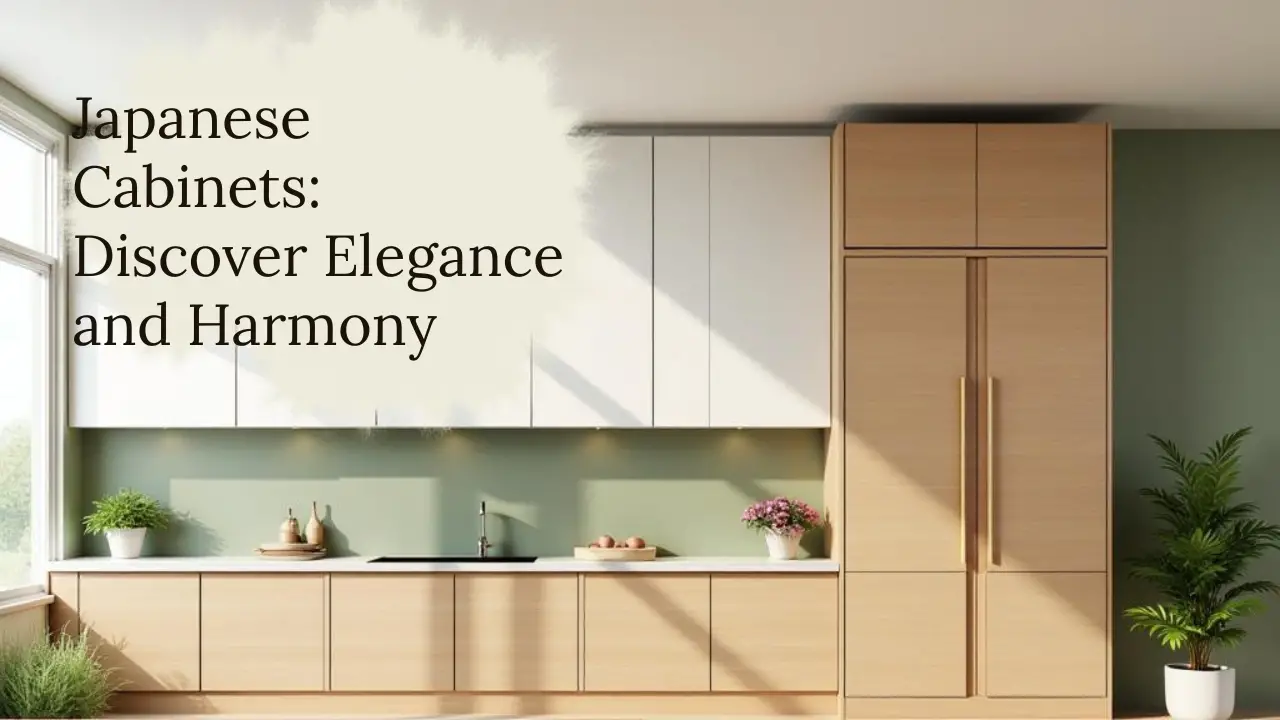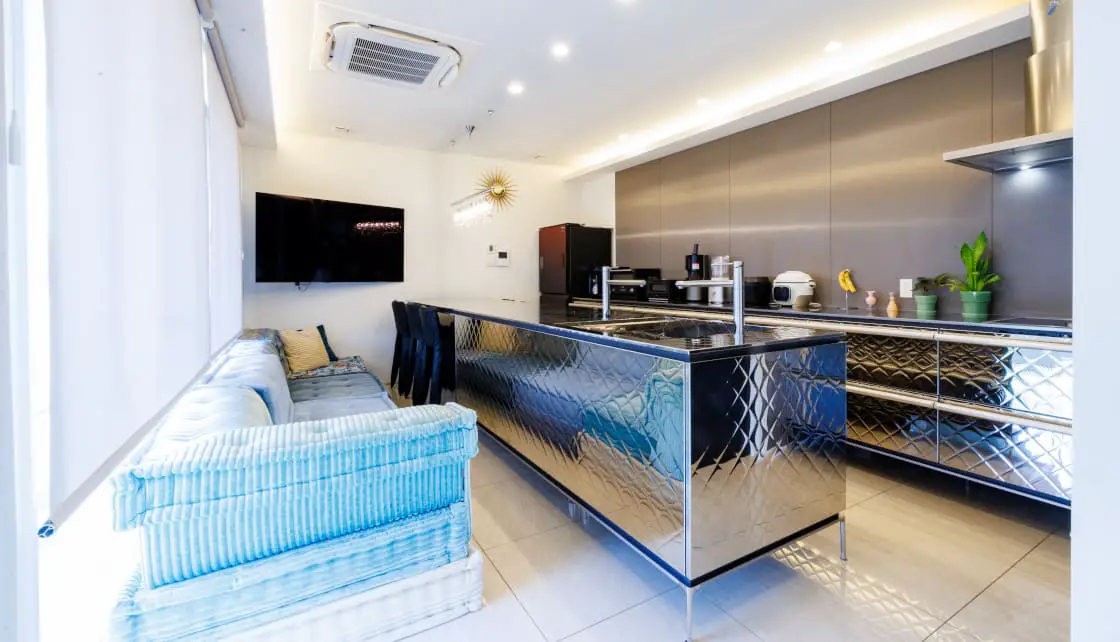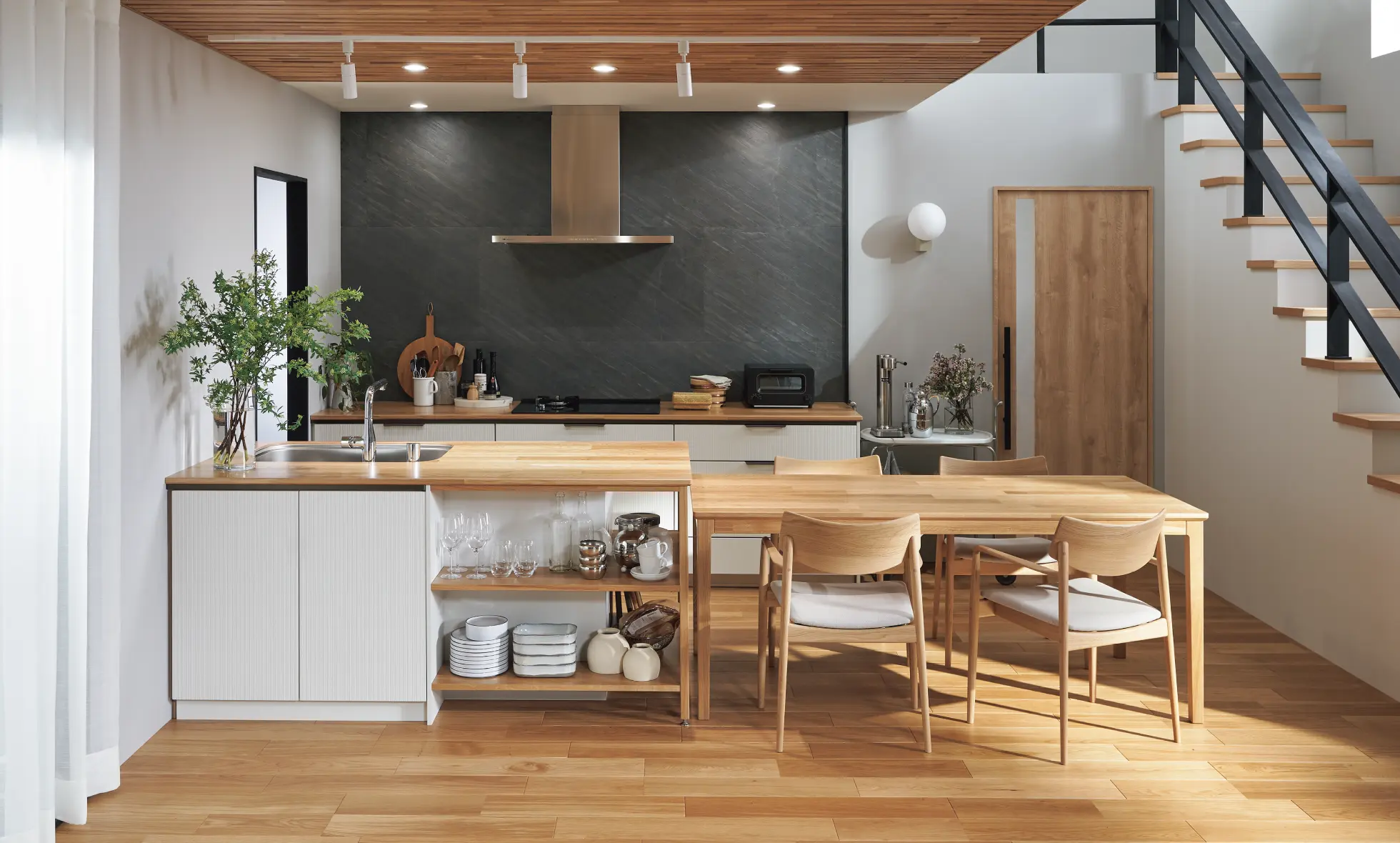By using our website, you agree to the use of cookies as described in our Cookie Policy
The Boss’s Daughter
Japanese Cabinets: Harmony in Design

Japanese Cabinets: Harmony in Design
When you think of Japan, images of serene temples, minimalist tea houses, and carefully tended gardens often come to mind. Japanese design has a way of creating calm through simplicity, balance, and intentional living. That same philosophy extends into cabinetry, where form, function, and harmony come together in a way that feels both timeless and modern.
For Bay Area homeowners, Japanese cabinetry offers something special. It’s not just about storage; it’s about creating a space that feels peaceful, efficient, and deeply connected to nature.
What Defines Japanese Cabinetry?
Japanese cabinetry blends minimalism, craftsmanship, and harmony with nature. The approach isn’t simply about how cabinets look, but how they function within the entire home.
Here are some hallmarks of Japanese cabinetry:
-
Clean, minimalist lines – Similar to Scandinavian design, but even more pared back. Surfaces are sleek, hardware is minimal, and ornamentation is rare.
-
Natural materials – Woods like cedar, hinoki (a type of cypress), and bamboo are often used. These materials aren’t just chosen for looks; they carry cultural significance and natural antibacterial properties.
-
Sliding doors (shoji inspiration) – Instead of swing-out cabinet doors, many Japanese designs use sliding panels, inspired by traditional shoji screens. This saves space and creates a seamless look.
-
Integration with architecture – Cabinets often appear as extensions of walls or floors, blending seamlessly into the structure rather than standing out.
-
Wabi-sabi philosophy – A design principle that embraces imperfection and impermanence. Japanese cabinets often highlight natural wood grain, knots, or subtle variations in finish.
The result? Spaces that feel light, uncluttered, and harmonious.
 Visit https://www.toyokitchen.co.jp/en/case/ to learn more about this cabinet line.
Visit https://www.toyokitchen.co.jp/en/case/ to learn more about this cabinet line.
Function Meets Tradition
Japanese homes are often smaller than those in the U.S., which means efficiency is critical. That has led to cabinetry that’s incredibly space-conscious, with clever solutions for small kitchens and bathrooms.
Features you’ll often find in Japanese cabinetry include:
-
Hidden storage – Drawers tucked behind panels or under counters.
-
Modular layouts – Flexible designs that can adapt to changing needs.
-
Compact efficiency – Perfect for Bay Area condos or accessory dwelling units (ADUs).
While rooted in tradition, many Japanese brands also lean into technology. Some cabinetry integrates advanced features like built-in lighting, innovative hinge systems, and easy-to-clean surfaces designed for modern life.
Top Japanese Cabinet Brands
Here are some of the leading Japanese cabinet makers, blending tradition with innovation:
Toyo Kitchen Style
Known for bold, futuristic designs, Toyo Kitchen Style pushes the boundaries of traditional cabinetry. Their kitchens often feature modular layouts, sleek finishes, and a sense of playfulness that sets them apart.
Cleanup Corporation
Cleanup is one of Japan’s most established kitchen brands, famous for its stainless steel cabinets. They prioritize durability, hygiene, and function, making them ideal for families who want something both stylish and practical.
LIXIL
A global leader in housing and building materials, LIXIL offers a wide range of cabinetry options. Their designs combine Japanese simplicity with modern convenience, making them a versatile choice for remodels.
Takara Standard
Takara Standard specializes in enameled steel cabinetry. Their surfaces are incredibly durable, easy to clean, and resistant to heat and moisture, perfect for busy Bay Area kitchens.
Daiken
Daiken is known for its eco-friendly approach, using sustainable woods and recycled materials. They align with California’s push toward greener living, offering cabinetry that’s as responsible as it is beautiful.
 Check out https://cleanup.jp/newproducts2025/ for more information on this cabinet line
Check out https://cleanup.jp/newproducts2025/ for more information on this cabinet line
Why Japanese Cabinets Work in Bay Area Homes
The Bay Area and Japanese design share something in common: an appreciation for balance, nature, and thoughtful living. Here’s why Japanese cabinetry is such a natural fit for local homes:
-
Great for small spaces – Many East Bay homes, especially older ones, have compact kitchens. Japanese cabinetry’s efficiency makes the most of every inch.
-
Blends with California casual – Natural woods and minimalist lines complement open, airy Bay Area homes.
-
Calming environments – A Zen-inspired kitchen or bathroom provides a retreat from busy Bay Area life.
-
Sustainability – With eco-friendly materials and efficient design, Japanese cabinetry aligns with California’s green building values.
-
Timelessness – While trends come and go, Japanese design remains classic. Its understated elegance works in both traditional and modern homes.
How Japanese Cabinets Compare Globally
We’ve already explored German cabinets, Italian cabinets, and Scandinavian cabinets. Each brings something unique:
-
German cabinets – engineered for precision and efficiency.
-
Italian cabinets – bold artistry and luxury.
-
Scandinavian cabinets – minimalist warmth and coziness.
-
Japanese cabinets – spiritual harmony, efficiency, and natural integration.
While Scandinavian and Japanese cabinets share a love of minimalism, Japanese design is more rooted in philosophy. It’s about balance and harmony not just looks, but how a space makes you feel.
Conclusion: Harmony in the Home
Japanese cabinets go beyond simple storage. They represent a way of living that values simplicity, balance, and connection with nature. For Bay Area homeowners, they offer a chance to create kitchens and bathrooms that feel calm, efficient, and timeless.
At Toupin Construction, we love helping homeowners explore cabinetry from around the world. Whether your style leans German, Italian, Scandinavian, Japanese or a blend of them all, our team can help you design a remodel that’s as beautiful as it is functional.
‹ Back



Comments